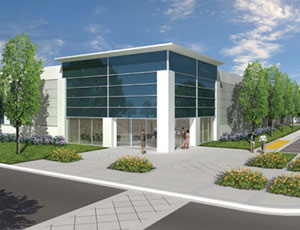Data centers are not traditionally known for their green aspects, but one Silicon Valley firm firmly believes that customers have embraced LEED-certified energy-efficient operations that are in line with California�s sustainability demands.

Wholesale operator Vantage Data Center recently opened its doors to the first of three buildings at its $300-million, 18-acre campus in Santa Clara off Walsh Avenue, which was formerly occupied by Intel.
At a recent Earth Day showcase, featuring booths and panel discussions, Vantage also announced the Apollo Innovation Initiative, a data center development framework integrating comprehensive design, project development and program management processes led by data center domain-area experts.
“Energy efficiency in data center construction and operations is important and should not be shrugged off,” says Vantage CEO Jim Trout.
The Apollo Initiative allows Vantage to build highly efficient, next-generation data centers at a fraction of the risk and time normally associated with current practices in the data center industry, that deliver quantifiable benefits to business customers. Trout says the initiative brings together products, systems and leading-edge technology partners, such as Fujitsu’s PalmSecure Biometric Physical Access Control Solution, Intelligent Building Interface System (IBIS) building management software and Toshiba G9000 UPS units (Uninterrupted Power Supply).
The first Santa Clara data center (V3) commissioned 6MW in less than six months from the start of construction and is a LEED platinum candidate. V2, now under construction by Hensel Phelps, leverages design philosophies similar to the recently announced Open Compute Project specifications for mechanical (cooling) delivery, showing a like-minded approach to identifying the most effective means to build with high efficiency components and systems. V2 is also going for LEED platinum. (V1 is the old Intel office building, which will be reconstructed next.)
Green elements at V3 include reuse of existing materials, concrete walls and efficient roof insulation that reduce the demand on heating and cooling systems, smart lighting design and motion sensors and Energy Star products.
“The typical data center operator doesn’t focus primarily on the business needs of the Enterprise IT Units or on creating a means for IT departments to positively contribute to the bottom line,” says Trout. “Most data centers are built with the mentality of a real estate landlord. We see ourselves as a partner helping IT organizations deal with the most expensive investments in their budgets.”
Trout says Vantage’s electrical, mechanical and architectural innovations enable customers to contain costs and secure operating advantages simply not possible at other wholesale or retail data center facilities.
Electrical design-build contractor Rosendin Electric says it is incorporating a number of features to conserve energy and promote greater efficiency at the campus. The data centers include high-efficiency uninterruptible power supplies (UPS) to assure ongoing operation with minimal energy requirements. These units are 25% more energy efficient than most double-conversion UPS modules in widespread use in the industry, according to Steve Emert, director of Mission Critical Engineering for Rosendin.
The building cooling systems are installed outside and use air-side economization, pumping cooler external air into the building – a real power saving since most data centers consume enormous amounts of energy to power air conditioning. The campus also has its own on-site electrical substation with a 37MW IT load capacity.
Other V3 principals include Carlson Consulting/Design/Construction, DGA Planning/Architecture/Interiors, Reed Associates Landscaping and Kier & Wright Civil Engineering.
Post a comment to this article
Report Abusive Comment